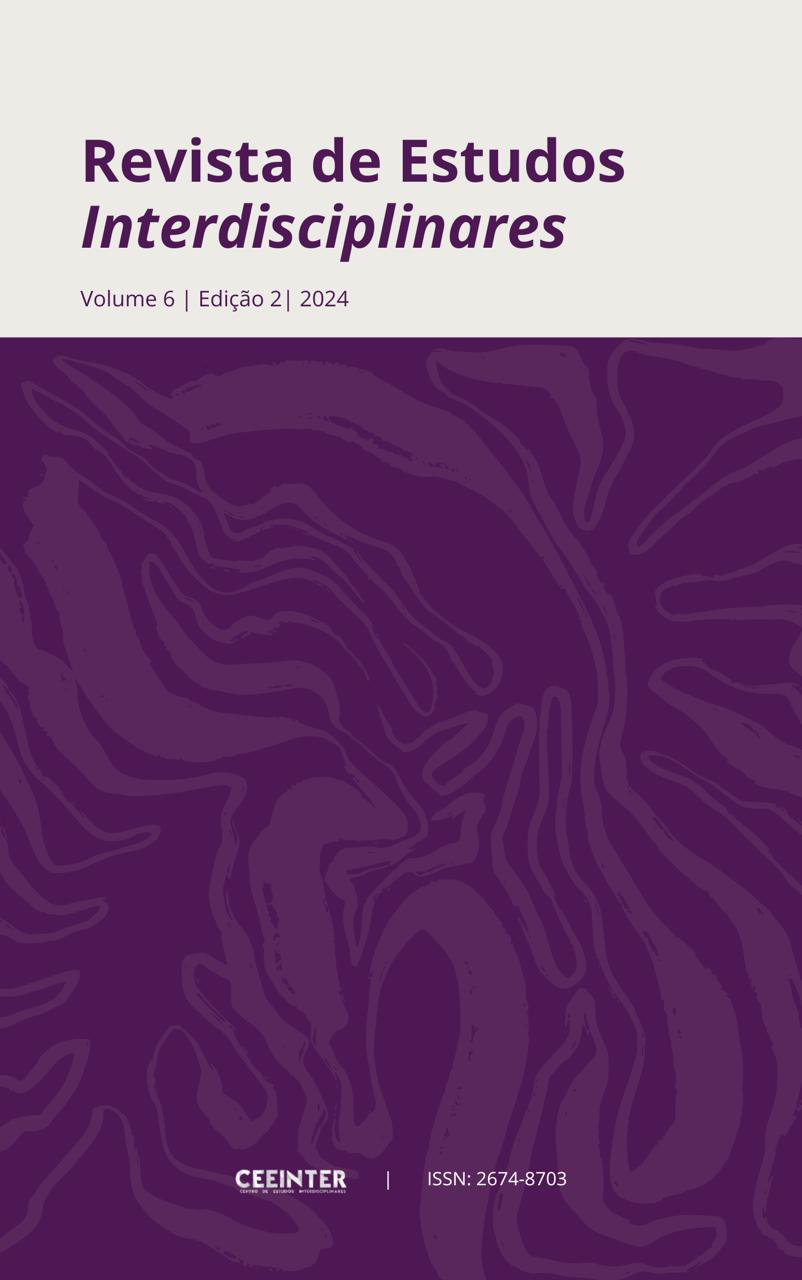Challenges and Strategies in Supporting Students with Acquired Blindness
Visualizações: 331DOI:
https://doi.org/10.56579/rei.v6i2.1514Keywords:
Visual Impairment, Acquired Blindness, Resource Room, RehabilitationAbstract
This article aims to better understand the perceptions of students with acquired blindness, regarding the rehabilitation process at the Visual Impairment Resource Room of the Social Inclusion Care Center – CAIS, in the Municipality of Diadema - SP. The study was conducted with 5 (five) students, all adults in different age groups, through a qualitative research approach, using semi-structured individual interviews as a data collection instrument. The purpose of the study was to plan, based on the analysis of the students' perceptions, improvements in the conduct of the teaching-learning process for rehabilitation, as well as in the experience at the Center, focusing on working with the students' self-esteem. The results indicate that the main aspect or goal of a person with acquired blindness in their rehabilitation process is social reintegration, with the acquisition of reading and writing, as well as orientation and mobility, being the main means or tools that the educator can use to contribute to this reintegration process. In addition to the rehabilitation methods or process itself, it was demonstrated by the applied research, and particularly by the observations made, that the psychological aspect is the primary issue or barrier to be overcome, requiring special attention from the educator.
Downloads
References
AGÊNCIA BRASIL. IBGE: 6,2% da população têm algum tipo de deficiência. Disponível em: http://agenciabrasil.ebc.com.br/geral/noticia/2015-08/ibge-62-da-populacao-tem-algum-tipo-de-deficiencia. Acesso em: 12 mar. 2024.
ALMEIDA, Tamires S.; ARAÚJO, Filipe V. Diferenças experienciais entre pessoas com cegueira congênita e adquirida: uma breve apreciação. Revista Interfaces: Saúde, Humanas e Tecnologia, Várzea Alegre, v. 1, n. 3, p. 1-20, jun. 2013.
BRASIL. MUNICÍPIO DE DIADEMA. Secretaria de Educação. Centro de Atenção à Inclusão Social – CAIS. Projeto Político Pedagógico. Diadema, 2018.
BRUMER, Anita; PAVEI, Katiucci; MOCELIN, Daniel G. Saindo da “escuridão”: perspectivas da inclusão social, econômica, cultural e política dos portadores de deficiência visual em Porto Alegre. Sociologias, Porto Alegre, v. 6, n. 11, p. 300-327, jan./jun. 2004. Disponível em: https://seer.ufrgs.br/sociologias/article/view/5453. Acesso em: 14 fev. 2024. DOI: https://doi.org/10.1590/S1517-45222004000100013
FELICETTI, Suelen A.; BERNARDINE, Angelita G.; CARTELLI, Zulméia; SANTOS, Sandro A. Aceitação, orientação e mobilidade: um estudo de caso considerando o ponto de vista de pessoas cegas ou com baixa visão. Disponível em: https://revistas.ufpr.br/diver/article/download/50082/30191. Acesso em: 19 fev. 2024.
FUNDAÇÃO DORINA NOWIL. 2019. Disponível em: https://www.fundacaodorina.org.br/a-fundação/deficiencia-visual/legislacao. Acesso em: 15 mar. 2024.
GERHARDT, Tatiana E.; SILVEIRA, Denise T. Métodos de pesquisa. Porto Alegre: Editora da UFRGS, 2009.
LAKATOS, Eva M.; MARCONI, Marina de A. Metodologia científica. São Paulo: Atlas, 2011.
LIRA, Miriam C. F.; SCHLINDWEIN, Luciane M. A pessoa cega e a inclusão: um olhar a partir da psicologia histórico-cultural. Cadernos CEDES, Campinas, v. 28, n. 75, p. 171-190, maio/ago. 2008. Disponível em: http://www.scielo.br/scielo.php?pid=S0101-32622008000200003&script=sci_abstract&tlng=pt. Acesso em: 21 fev. 2024. DOI: https://doi.org/10.1590/S0101-32622008000200003
MACEDO, Paula C. M. Deficiência física congênita e saúde mental. Revista SBPH, Rio de Janeiro, v. 11, n. 2, p. 107-132, jan./dez. 2008. Disponível em: http://pepsic.bvsalud.org/scielo.php?script=sci_arttext&pid=S1516-08582008000200011. Acesso em: 21 fev. 2024. DOI: https://doi.org/10.57167/Rev-SBPH.11.228
MINAYO, Maria Cecília de Souza (Org.). Pesquisa social: teoria, método e criatividade. Petrópolis, RJ: Vozes, 1994.
OLIVEIRA, Sílvio L. de. Tratado de metodologia científica. São Paulo: Pioneira, 2002.
ORMELEZZI, Eliana M. Os caminhos da aquisição do conhecimento e a cegueira: do universo do corpo ao universo simbólico. 2000. Dissertação (Mestrado) – Faculdade de Educação, Universidade de São Paulo, São Paulo.
SEVERINO, Antônio J. Metodologia do trabalho científico. 1. ed. São Paulo: Cortez, 2013.
SKLIAR, Carlos. A invenção e a exclusão da alteridade "deficiente" a partir dos significados da normalidade. 1999. Disponível em: https://seer.ufrgs.br/educacaoerealidade/article/view/55373. Acesso em: 19 fev. 2023.
SOUZA, Olga S. H. (Org.). Itinerário da inclusão escolar: múltiplos olhares, saberes e práticas. Canoas: ULBRA Porto Alegre AGE, 2008.
VARGAS, A. Z. Razão, cegueira e mito. Topoi, v. 12, n. 22, jan./jun. 2011, p. 284-303. Disponível em: http://www.scielo.br/pdf/topoi/v12n22/1518-3319-topoi-12-22-00284.pdf. Acesso em: 19 fev. 2023. DOI: https://doi.org/10.1590/2237-101X012022016
VYGOTSKY, Liev. Obras escolhidas: fundamentos de defectologia. Madrid: Visor, 1997.
Downloads
Published
How to Cite
Issue
Section
License
Copyright (c) 2024 Interdisciplinary Studies Journal

This work is licensed under a Creative Commons Attribution 4.0 International License.
The Journal of Interdisciplinary Studies adopts the Creative Commons Attribution 4.0 International License (CC BY 4.0), which allows for sharing and adapting the work, including for commercial purposes, provided proper attribution is given and the original publication in this journal is acknowledged.













